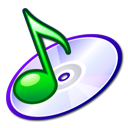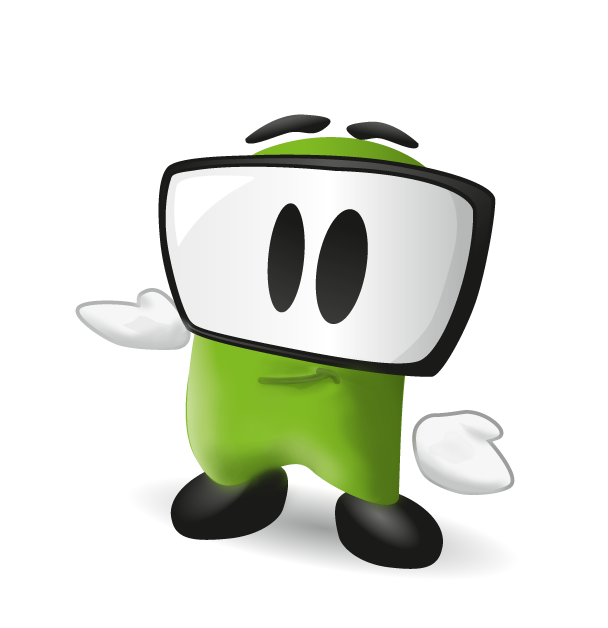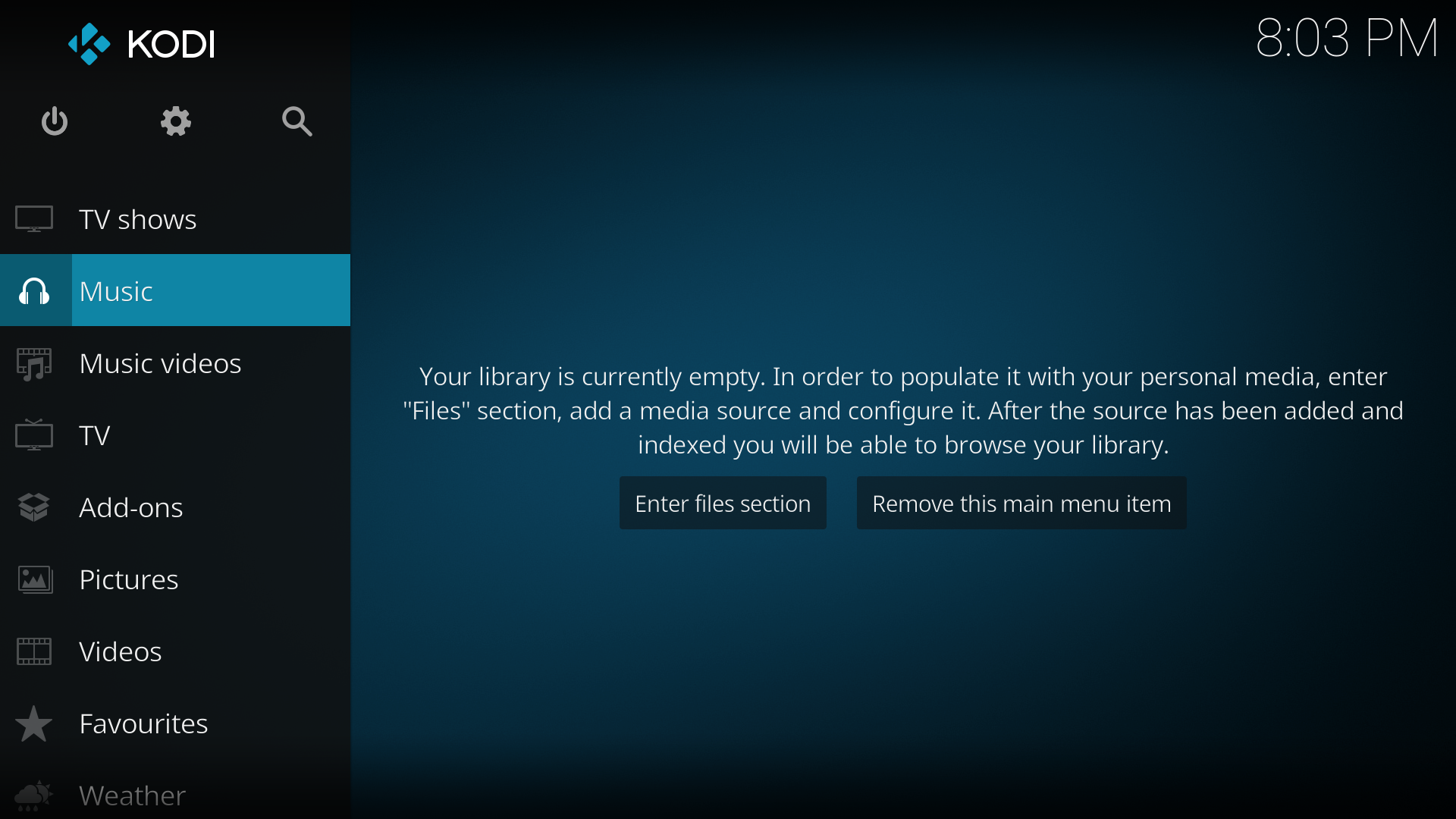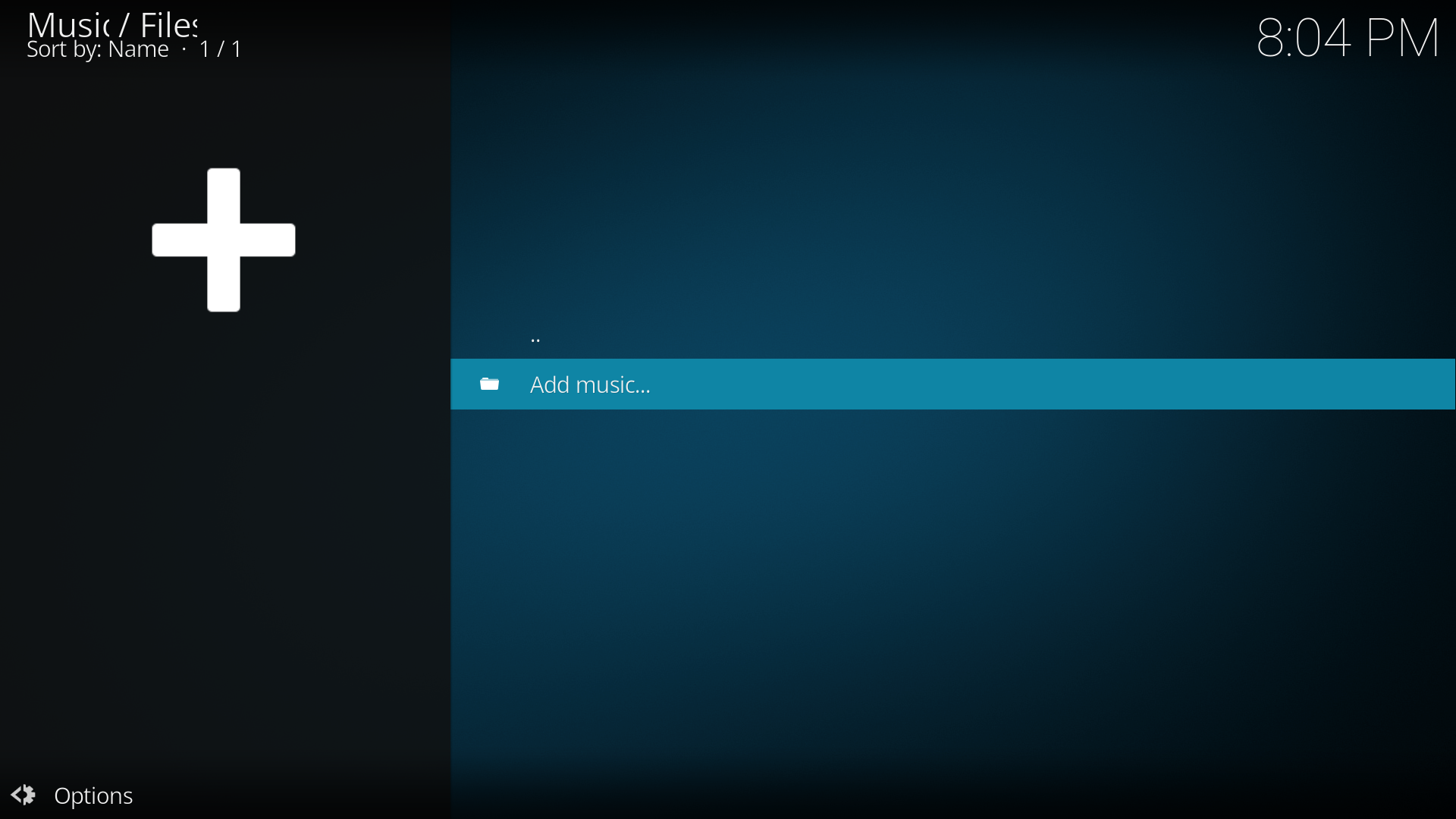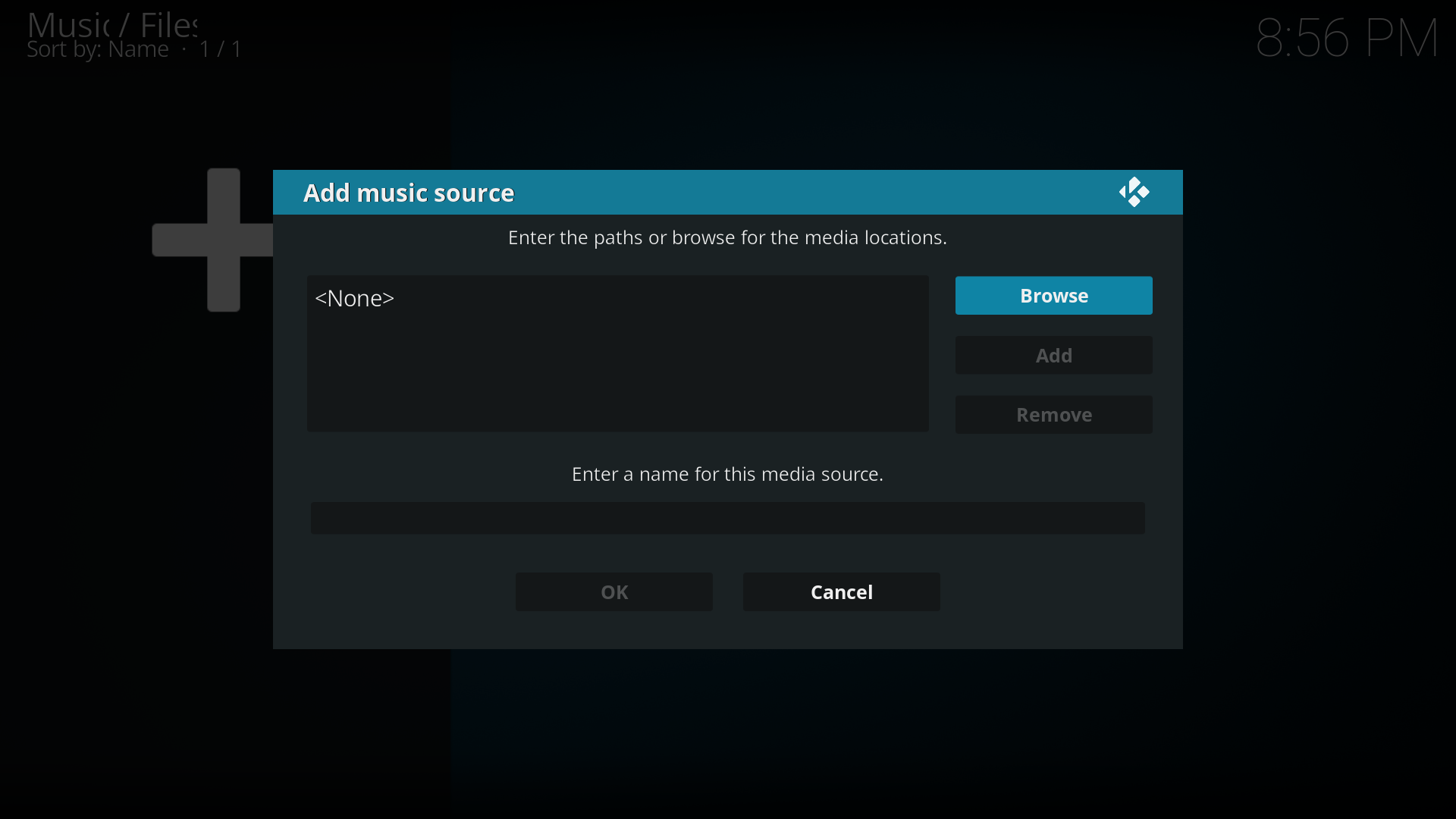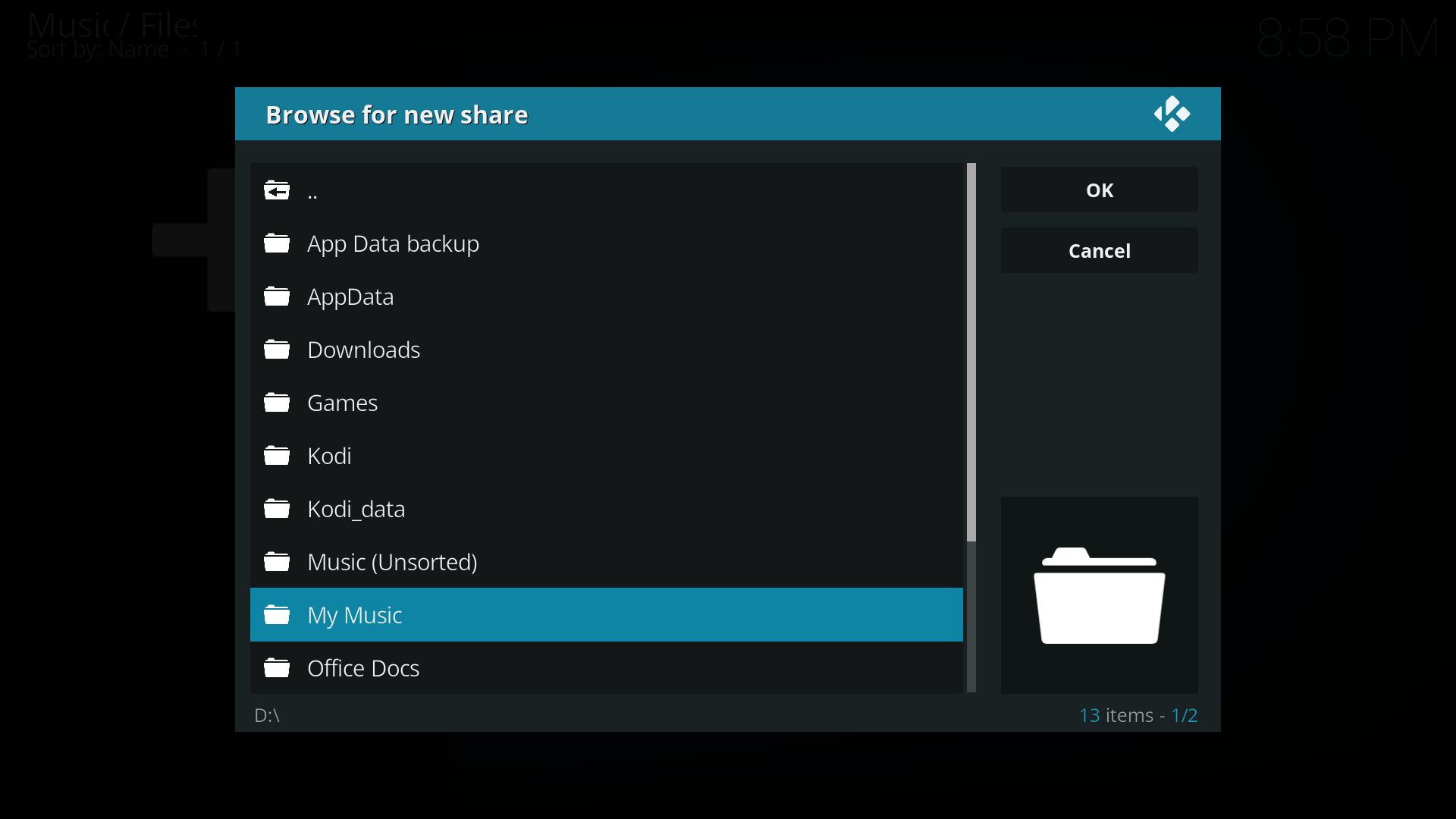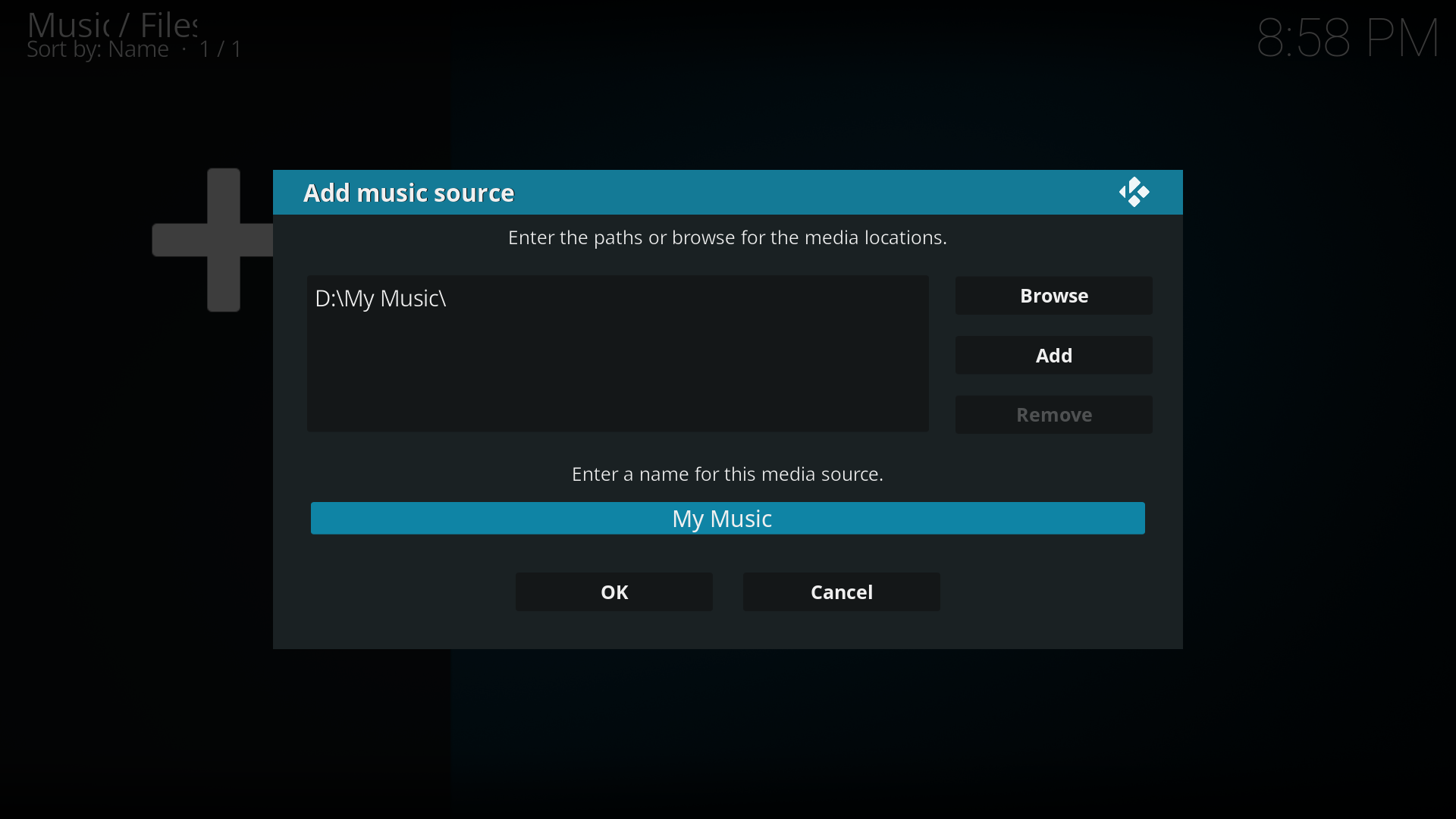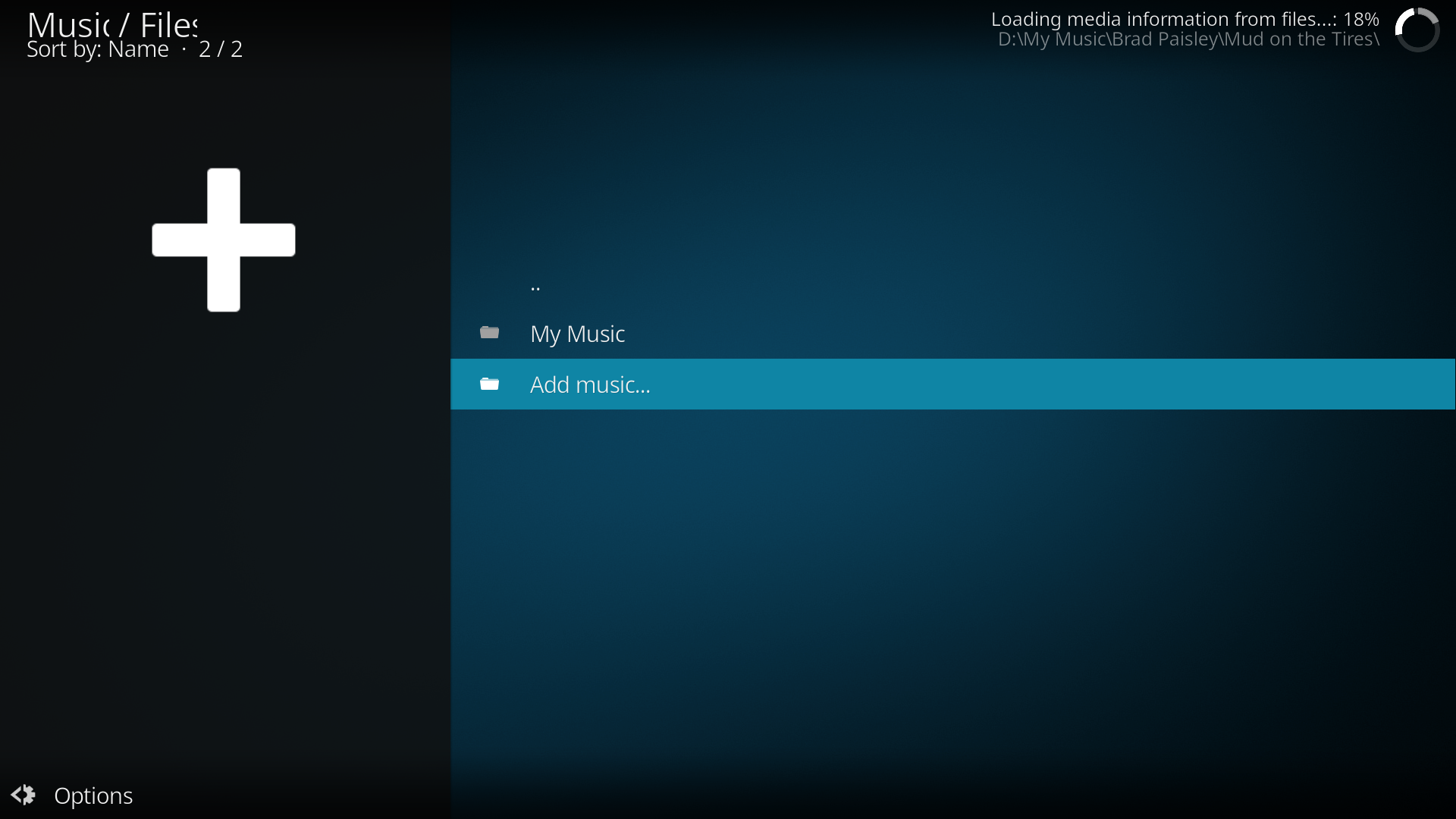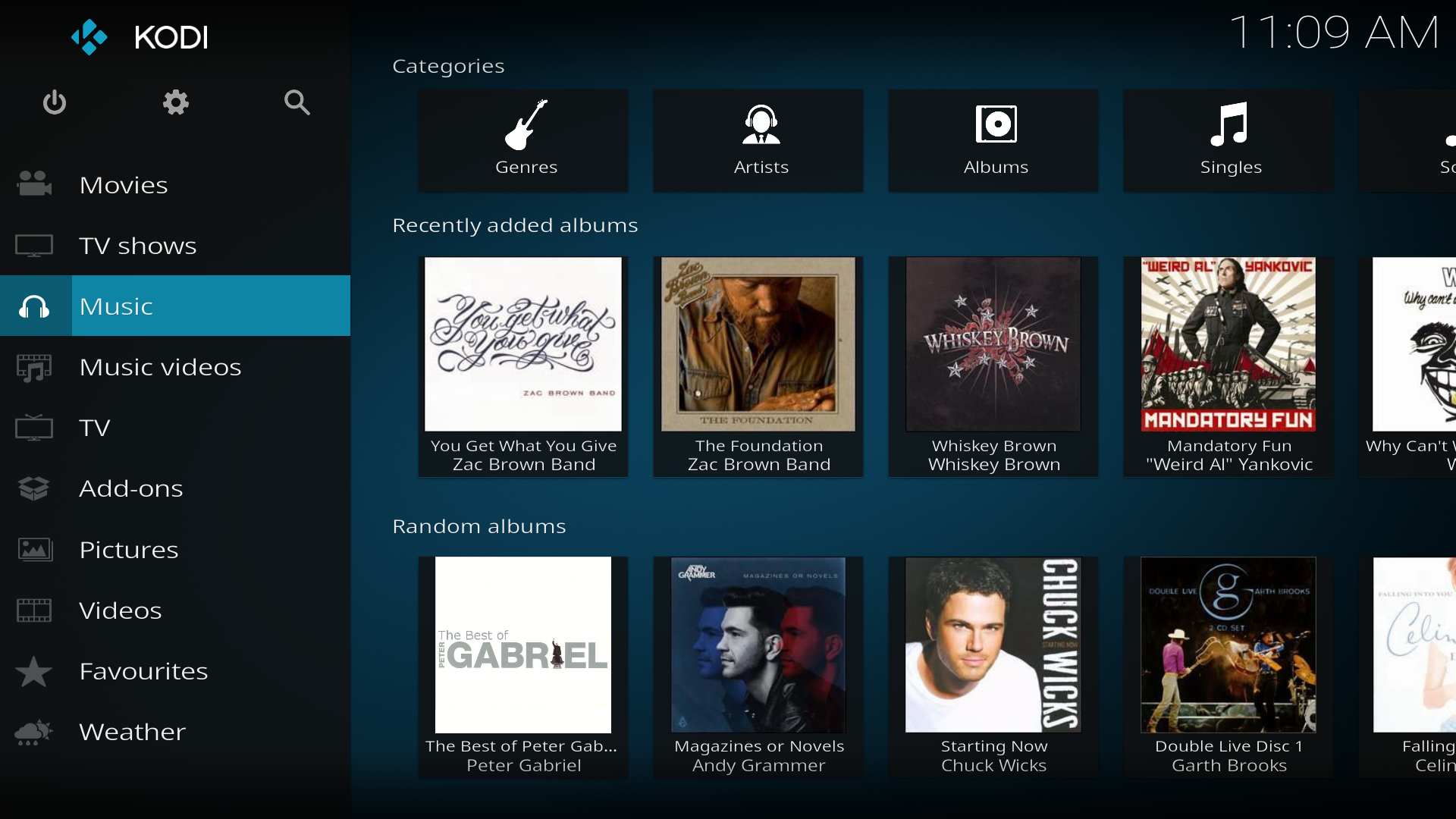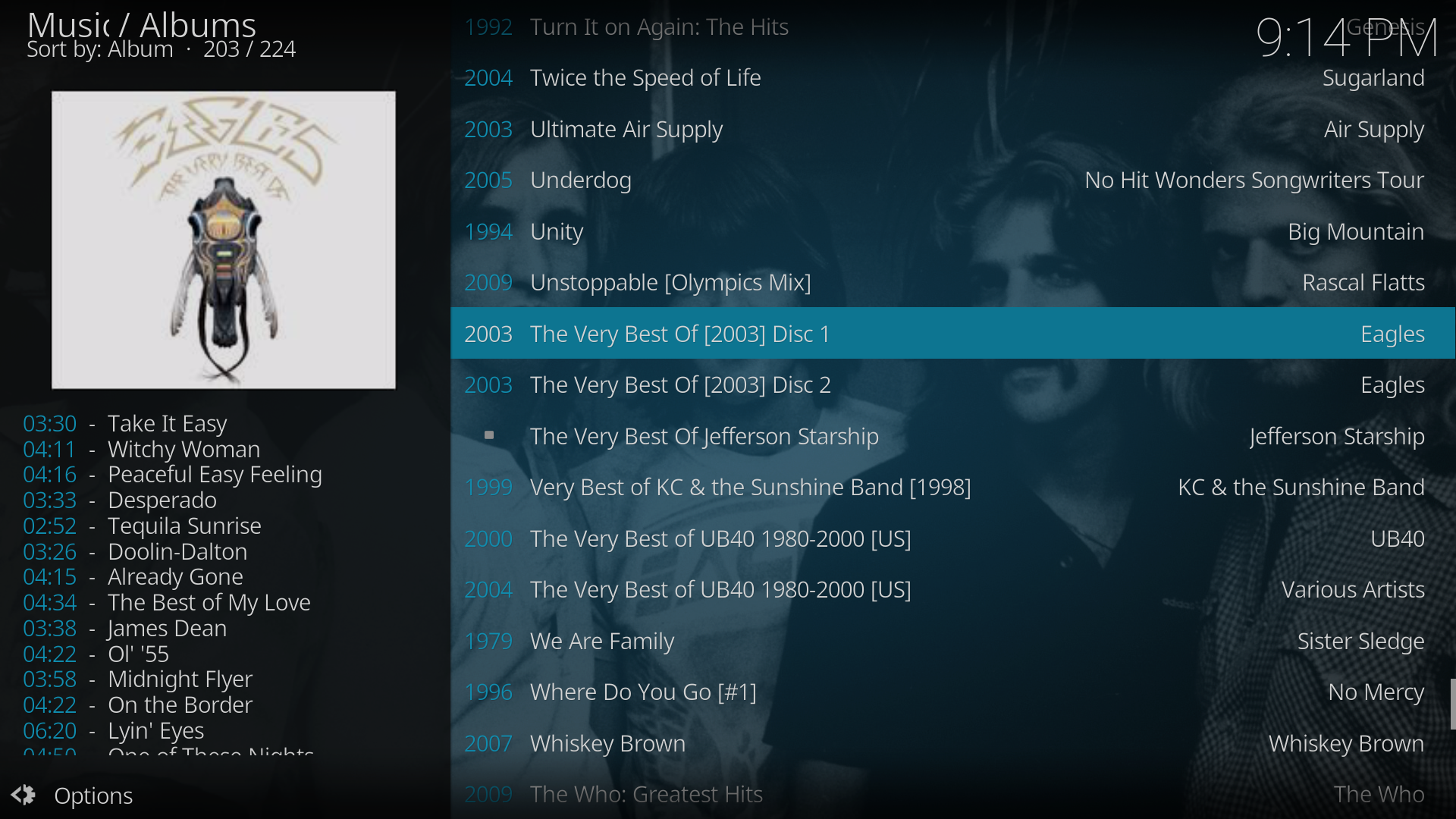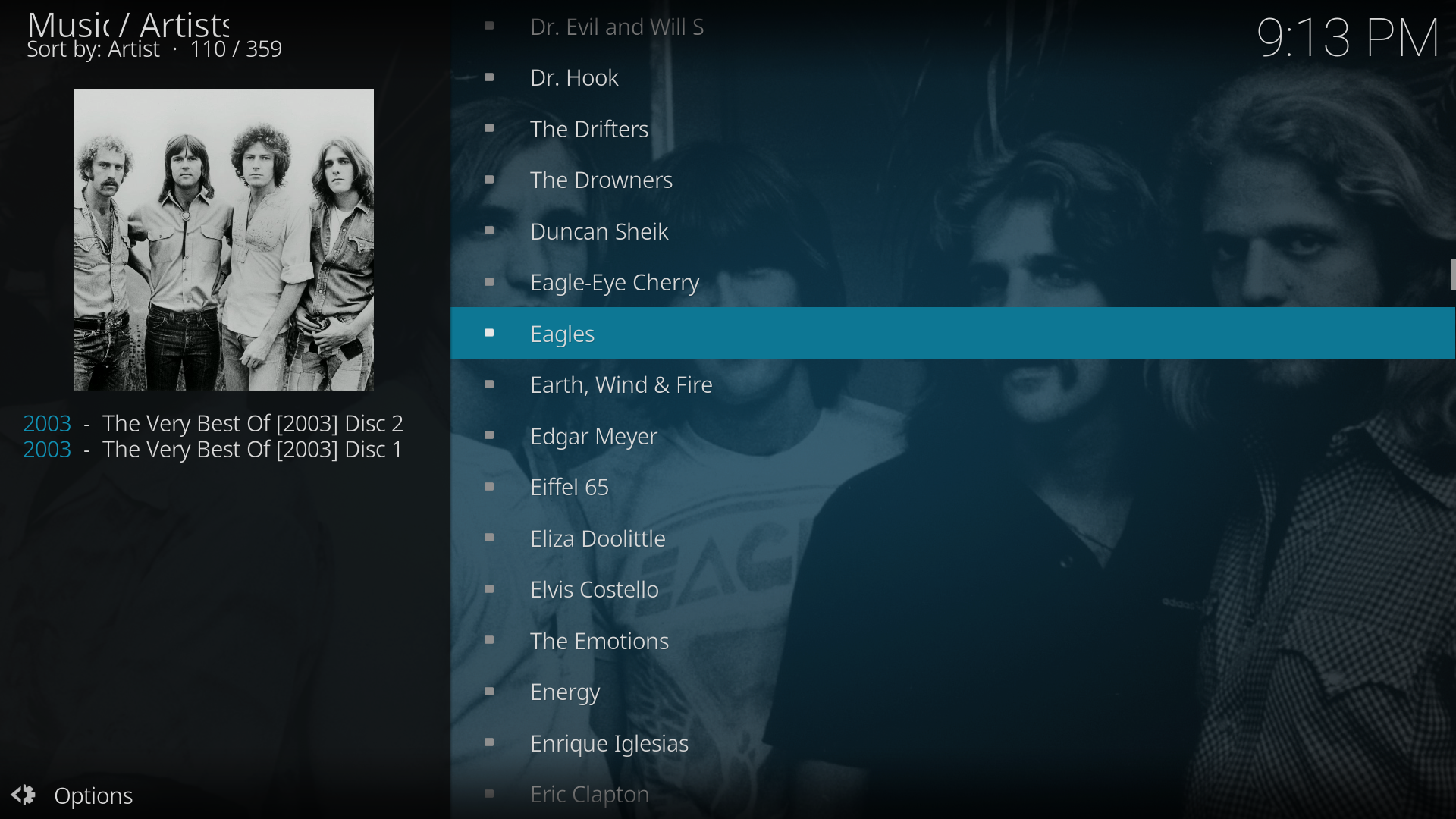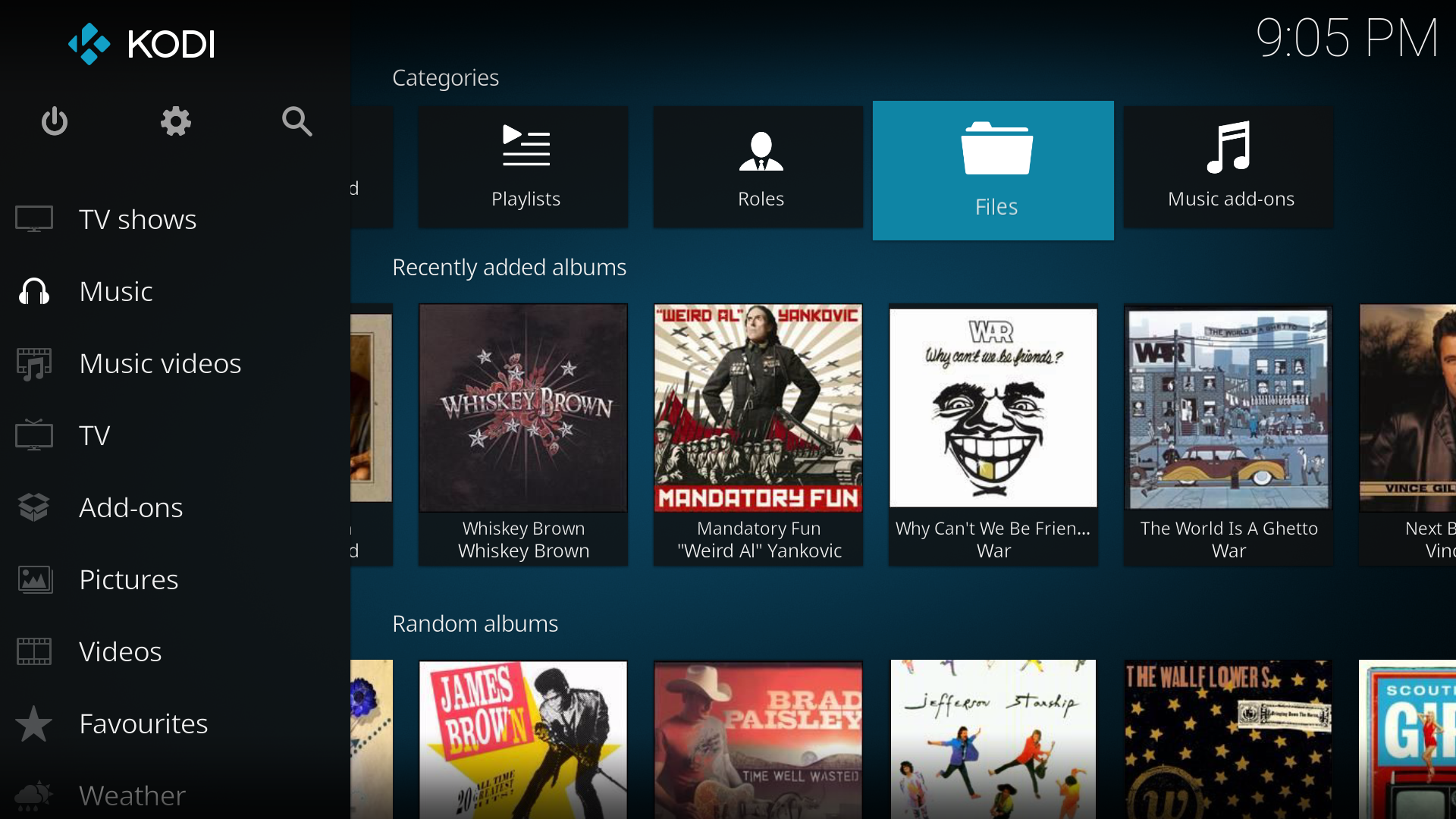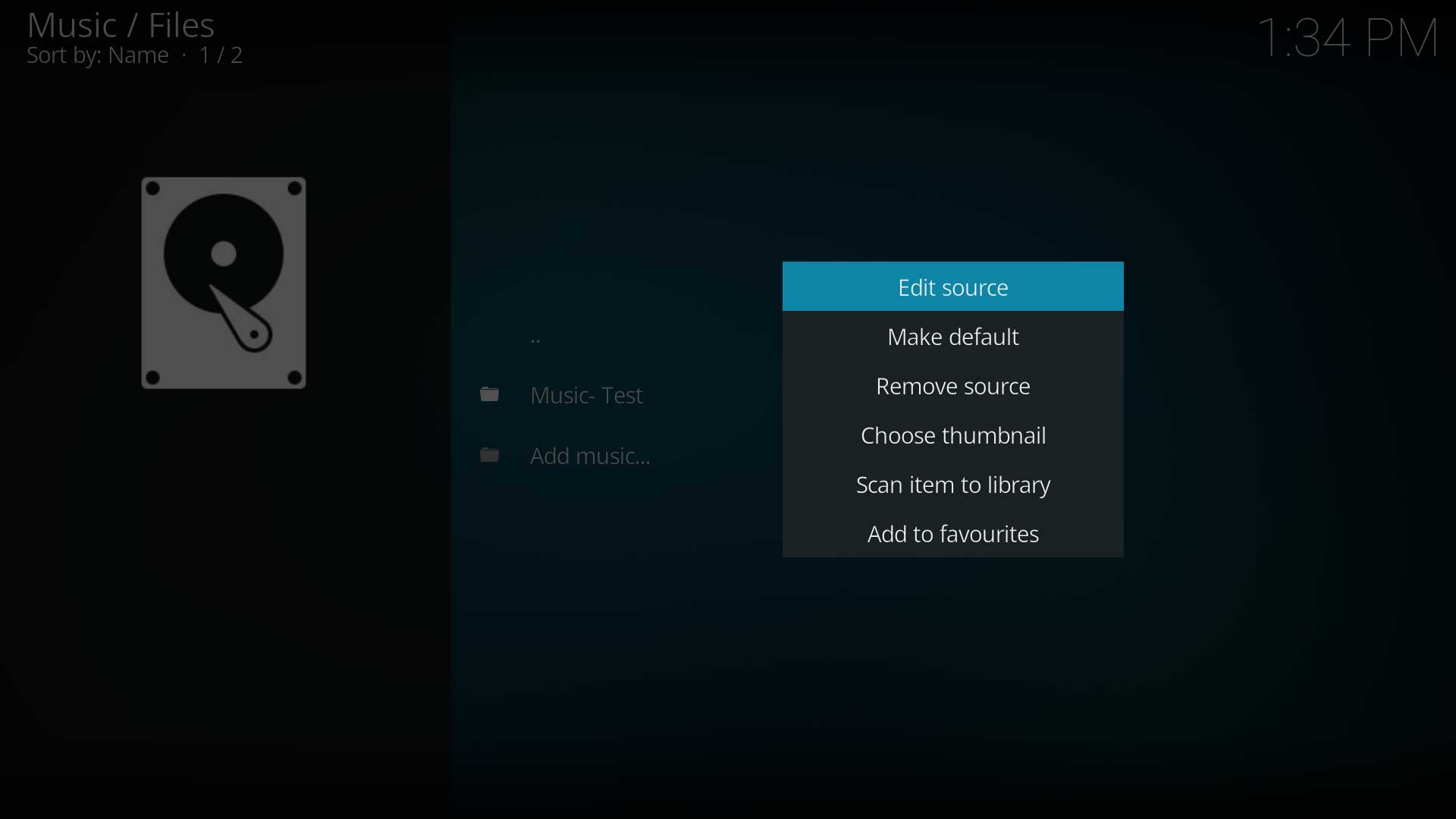Adding music to the library: Difference between revisions
(Page cleared) |
(Page Overhaul) |
||
| Line 1: | Line 1: | ||
{{MusicLibraryCreate}} | |||
{{mininav|[[Music library]]}} | |||
= Introduction = | |||
<section begin="intro"/>This page details the following: | |||
*Adding and removing Sources | |||
*Scan (import) your music collection into the Music Library. | |||
*Troubleshooting common problems | |||
*Describes the network protocols accepted for remote music sources | |||
If you are a new user of {{kodi}}, or you have little experience setting up the Music section, then it is important that you followed Steps 2 (Music Settings) & 3 (Music File Tagging) of the guide.<section end="intro"/> | |||
A reminder of the following: | |||
*Ensure the setting ''Fetch additional information during updates'' is disabled | |||
*Ensure you have taken care to correctly tag your music. If you haven't... then you are about to find out what happens. | |||
= Adding Music to Library = | |||
*'''Populating the music library is a two step process.''' | |||
**The first step reads the tags embedded in the music files. This is referred to as '''scanning'''. If there is any embedded artwork, this will also be scanned and cached. | |||
**The second optional step fetches additional artwork, artist and album information. This information and artwork can be downloaded from either online sources or fetched from local nfo files. This is referred to as '''scraping''' and is covered in detail in the next step of the guide. | |||
{{-}} | |||
== Initial Set Source & Scan == | |||
<section begin="First Time Music Setup" /> | |||
This process achieves the following: | |||
*Sets your music '''source(s)''' in {{Kodi}}. Simply explained, this points {{kodi}} to your music files (Steps 1-5) | |||
*Allows {{kodi}} to '''scan''' the tags in the music files and import that data into the library (Steps 6-7) | |||
*A brief introduction to navigating the Music Library (Steps 8-9) | |||
<gallery widths=500px heights=313px> | |||
File:Estuary_home_music.png|'''Step 1:''' On the Home menu highlight '''Music''' from the menu items, then move across and select '''Enter files section''' | |||
File:Estuary_music_file_browser.png|'''Step 2:''' In the '''Music File Browser''' select '''Add music'''. | |||
File:Estuary_add_music_source.png|'''Step 3:''' In the '''Add music source''' window select '''Browse'''. You can also manually add your source by selecting the box with '''<None>''' then typing in your path. If you chose to do it this way skip to '''Step 5''' | |||
File:Estuary_music_browse_source.png|'''Step 4:''' In the '''Browse for new share''' window, navigate to where your music is stored, select the folder and then select '''OK'''. | |||
File:Estuary_music_name_source.png|'''Step 5:''' You will now be taken back to the '''Add music source''' window. Under '''Enter a name for this media source''' you can optionally name your media source to replace the suggested name. Select '''OK''' | |||
File:Estuary_music_scan_source.png|'''Step 6:''' You will now be asked if you wish to add your media source to the library. If you do, then select '''Yes''', if you do not, then select '''No'''. By selecting '''No''' you will only have the option of accessing your media though the '''Music file browser''' | |||
File:Estuary_music_scanning_library.png|'''Step 7:''' If you selected '''Yes''' Kodi will begin scanning your source to the library. Once finished, you can back out to the Main Menu. | |||
File:Estuary_home_music_library.png|'''Step 8:''' Once your library is scanned you will be able to see & access '''Recently added albums, Random albums, Random Artist & Unplayed albums''' on the Home menu. | |||
File:Estuary_music_albums.png|You will also be able to view your entire music library by selecting '''Music''' from the Home menu, then selecting the appropriate category. Or from the Home menu, navigate to '''Categories''' at the top of the '''Music''' menu item and then selecting the category you wish to view. '''Example: Category''' → '''Albums'''. | |||
File:Estuary_music_artist.png|'''Example: Category''' → '''Artist'''. | |||
</gallery> | |||
<section end="First Time Music Setup" /> | |||
<center>{{green|'''At this point you should have a functioning Music Library'''}}</center> | |||
== Adding Additional Music Sources == | |||
<gallery widths=500px heights=313px> | |||
File:Estuary_home_music_files.png|To add additional sources to your library, from the Home menu select '''Music'''. Then navigate to the to the top of the page and under '''Categories''' select '''Files'''. Then follow the directions from '''Step 2''' in [[Adding_music_to_the_library#Initial Set Source & Scan|Initial Set Source & Scan]] | |||
</gallery> | |||
== Scan to Library == | |||
<gallery widths=500px heights=313px> | |||
File:Estuary_home_music_files.png|Image 1 | |||
File:Source-ContextMenu.jpg|Image 2 | |||
</gallery> | |||
In step 6 above, you were asked ''Do you want to add the media from this source to your library?'' If you selected '''NO''' and would now like to add the music files into the library, follow these steps: | |||
#Navigate to and enter ''Files'' as illustrated in Image 1 | |||
#Highlight the source to be scanned | |||
#Call up the Context Menu (Image 2) | |||
#Select ''Scan item to library'' (Image 2) | |||
Your music files will now be scanned and the data contained in the embedded tags will be added to the library<br /> | |||
{{red|If you answered '''Yes''' to the question in step 6 above, there is no need to perform this step. If you do perform this step, there are no consequences and {{kodi}} will only search for new files added since the last scan.}} <br /><br /> | |||
{{note|In v18 it will be possible to request a rescan of all tags. Useful if you have modified tags.}} | |||
= Remove A Source = | |||
<section begin="Remove A Source" /><gallery widths=500px heights=313px> | |||
File:Estuary_home_music_files.png|Image 1 | |||
File:Source-ContextMenu.jpg|Image 2 | |||
</gallery> | |||
To remove a source, follow these steps: | |||
#Navigate to and enter ''Files'' as illustrated in Image 1 | |||
#Highlight the source to be removed | |||
#Call up the Context Menu (Image 2) | |||
#Select ''Remove source'' (Image 2) | |||
#A confirmation prompt will display- ''Are you sure? Yes / No'' | |||
##Select ''Yes'' to remove the source | |||
##Select ''No'' to cancel the procedure | |||
#If you selected ''Yes'' you will then be asked ''Do you want to remove all items within this path from your library?''... | |||
##Yes- Will remove all songs from the library that were located in that source, and the associated Artists and Albums if they do not appear on any other source | |||
##No- Will keep the library listing of all music that was in that source. Be aware that you will be unable to play any music from the removed source, even if it is still displayed in the library | |||
#It is recommended that you now perform a [[Settings/Media/Library#Clean_library_2n | Clean Library]] to remove all orphaned entries from the database | |||
<section end="Remove A Source" /> | |||
= Troubleshooting = | |||
{| width="100%" | |||
{{FAQ| | |||
| BGcolor=WhiteSmoke | |||
| Question=Library contains random or duplicated entries | |||
| Answer= This is a result of errors in tagging. | |||
#Take note of the errors and correct them by following the recommended procedure in the previous step of the guide- Music Files and Tagging | |||
#Once errors are corrected follow the steps detailed in '''Remove A Source''' | |||
#Re-add the source using the '''Initial Set Source & Scan''' procedure detailed above | |||
}} | |||
{{FAQ| | |||
| BGcolor=WhiteSmoke | |||
| Question= I cannot add a source on my network | |||
| Answer= Seek further information in Section 5 - '''Network Sources''', below | |||
}} | |||
|} | |||
<center>{{red|'''If you have successfully scanned your music library, then you can safely ignore the next section and proceed to Scraping Additional Music Data'''}}</center> | |||
<br /> | |||
<div style="{{linear-gradient|left|#f5d3ff, #12b2e7}}">{{next|[[ |Scraping Additional Music data]]}} </div> | |||
= Network Sources = | |||
;{{main|Media sources}} | |||
Kodi gives you the ability to listen to music from a variety of sources. | |||
:'''''See [[Types of Media Sources]]''''' | |||
<br /> | |||
Some examples of sources that allow you to easily access all your digital music collection: | |||
* '''On your computer or a [[NAS (Network Attached Storage)]] device/system, which supports [[SMB]] file sharing''' | |||
* '''Stored directly on the hard drive''' | |||
* '''On CDs/DVDs''' | |||
* '''Streamed from the Internet''' | |||
;{{see also|Sources.xml}} | |||
<br /> | |||
If you use an non-standard network protocol to stream your media from a network, or for information on how to configure remote file shares | |||
;;{{See also|Configuring PC Shares}} | |||
<br /> | |||
{{Top}} | |||
<div style="{{linear-gradient|left|#f5d3ff, #12b2e7}}">{{next|[[ |Scraping Additional Music data]]}} </div> | |||
{{updated|17}} | |||
[[Category:FAQ]] | |||
[[Category:Index]] | |||
[[Category:Guides]] | |||
[[Category:Manual]] | |||
[[Category:First time user]] | |||
[[Category:Music library]] | |||
[[Category:Advanced topics]] | |||
[[Category:Quick Start Guide]] | |||
Revision as of 02:50, 6 October 2017
| Steps to create your Music Library |
|---|
| 1. Guide Main Page |
| 2. Music Settings |
| 3. Music File Tagging |
| 4. Scanning Music Into Library |
| 5. Artist information folder |
| 6. Scraping Additional Music data
|
| 7. Update Music Library |
8. NFO Files
|
9. Artwork
|
10. Import-export library
|
| 11. Backup & Recover |
Introduction
This page details the following:
- Adding and removing Sources
- Scan (import) your music collection into the Music Library.
- Troubleshooting common problems
- Describes the network protocols accepted for remote music sources
If you are a new user of Kodi, or you have little experience setting up the Music section, then it is important that you followed Steps 2 (Music Settings) & 3 (Music File Tagging) of the guide.
A reminder of the following:
- Ensure the setting Fetch additional information during updates is disabled
- Ensure you have taken care to correctly tag your music. If you haven't... then you are about to find out what happens.
Adding Music to Library
- Populating the music library is a two step process.
- The first step reads the tags embedded in the music files. This is referred to as scanning. If there is any embedded artwork, this will also be scanned and cached.
- The second optional step fetches additional artwork, artist and album information. This information and artwork can be downloaded from either online sources or fetched from local nfo files. This is referred to as scraping and is covered in detail in the next step of the guide.
Initial Set Source & Scan
This process achieves the following:
- Sets your music source(s) in Kodi. Simply explained, this points Kodi to your music files (Steps 1-5)
- Allows Kodi to scan the tags in the music files and import that data into the library (Steps 6-7)
- A brief introduction to navigating the Music Library (Steps 8-9)
- Estuary music scan source.png
Step 6: You will now be asked if you wish to add your media source to the library. If you do, then select Yes, if you do not, then select No. By selecting No you will only have the option of accessing your media though the Music file browser
Adding Additional Music Sources
To add additional sources to your library, from the Home menu select Music. Then navigate to the to the top of the page and under Categories select Files. Then follow the directions from Step 2 in Initial Set Source & Scan
Scan to Library
In step 6 above, you were asked Do you want to add the media from this source to your library? If you selected NO and would now like to add the music files into the library, follow these steps:
- Navigate to and enter Files as illustrated in Image 1
- Highlight the source to be scanned
- Call up the Context Menu (Image 2)
- Select Scan item to library (Image 2)
Your music files will now be scanned and the data contained in the embedded tags will be added to the library
If you answered Yes to the question in step 6 above, there is no need to perform this step. If you do perform this step, there are no consequences and Kodi will only search for new files added since the last scan.
Note: In v18 it will be possible to request a rescan of all tags. Useful if you have modified tags.
Remove A Source
To remove a source, follow these steps:
- Navigate to and enter Files as illustrated in Image 1
- Highlight the source to be removed
- Call up the Context Menu (Image 2)
- Select Remove source (Image 2)
- A confirmation prompt will display- Are you sure? Yes / No
- Select Yes to remove the source
- Select No to cancel the procedure
- If you selected Yes you will then be asked Do you want to remove all items within this path from your library?...
- Yes- Will remove all songs from the library that were located in that source, and the associated Artists and Albums if they do not appear on any other source
- No- Will keep the library listing of all music that was in that source. Be aware that you will be unable to play any music from the removed source, even if it is still displayed in the library
- It is recommended that you now perform a Clean Library to remove all orphaned entries from the database
Troubleshooting
|
| ||||
|
|
| Next step: | [[ |Scraping Additional Music data]] |
Network Sources
- Main page: Media sources
Kodi gives you the ability to listen to music from a variety of sources.
Some examples of sources that allow you to easily access all your digital music collection:
- On your computer or a NAS (Network Attached Storage) device/system, which supports SMB file sharing
- Stored directly on the hard drive
- On CDs/DVDs
- Streamed from the Internet
- See also: Sources.xml
If you use an non-standard network protocol to stream your media from a network, or for information on how to configure remote file shares
- See also: Configuring PC Shares
| Return to top |
|---|
| Next step: | [[ |Scraping Additional Music data]] |
